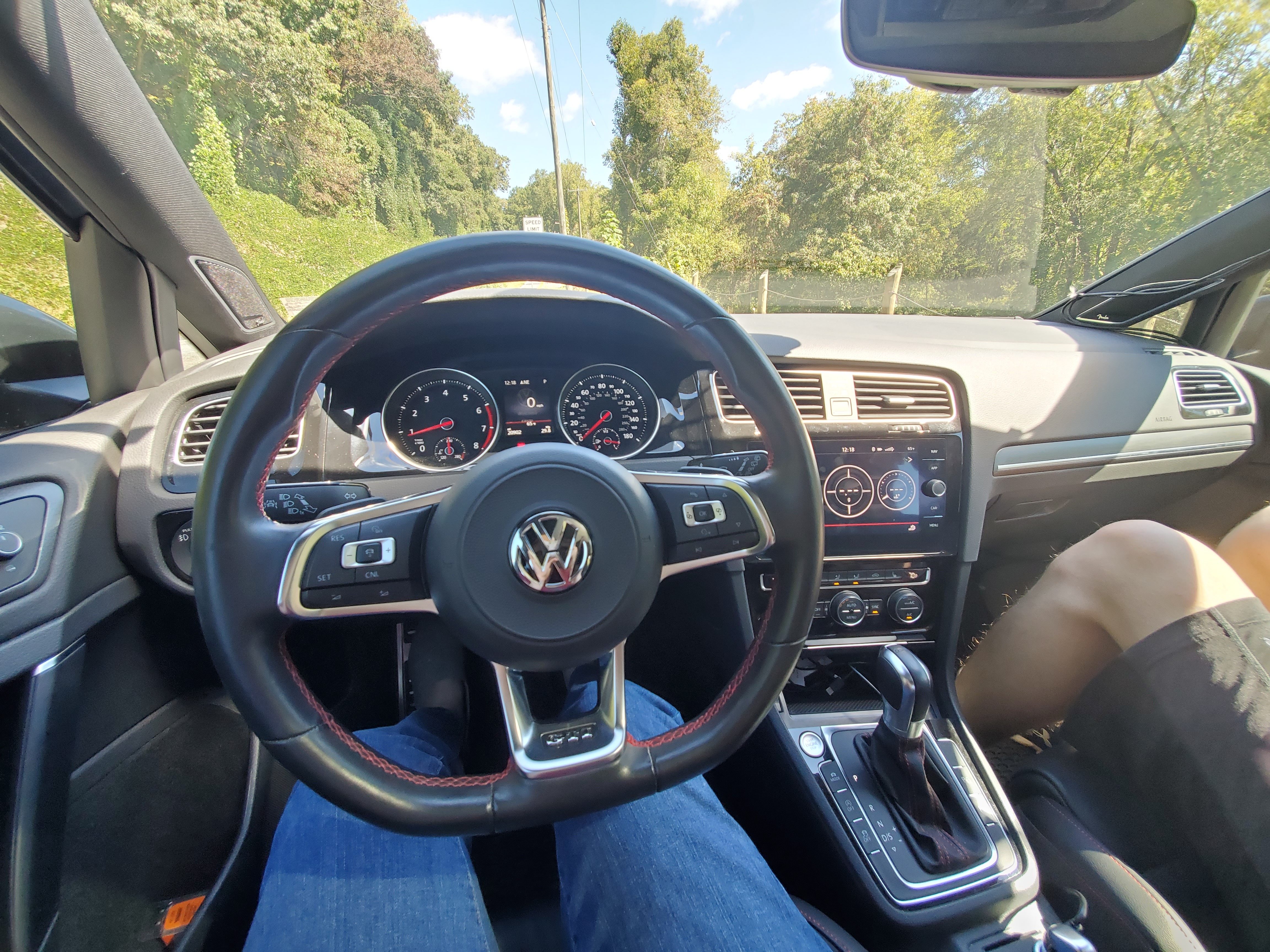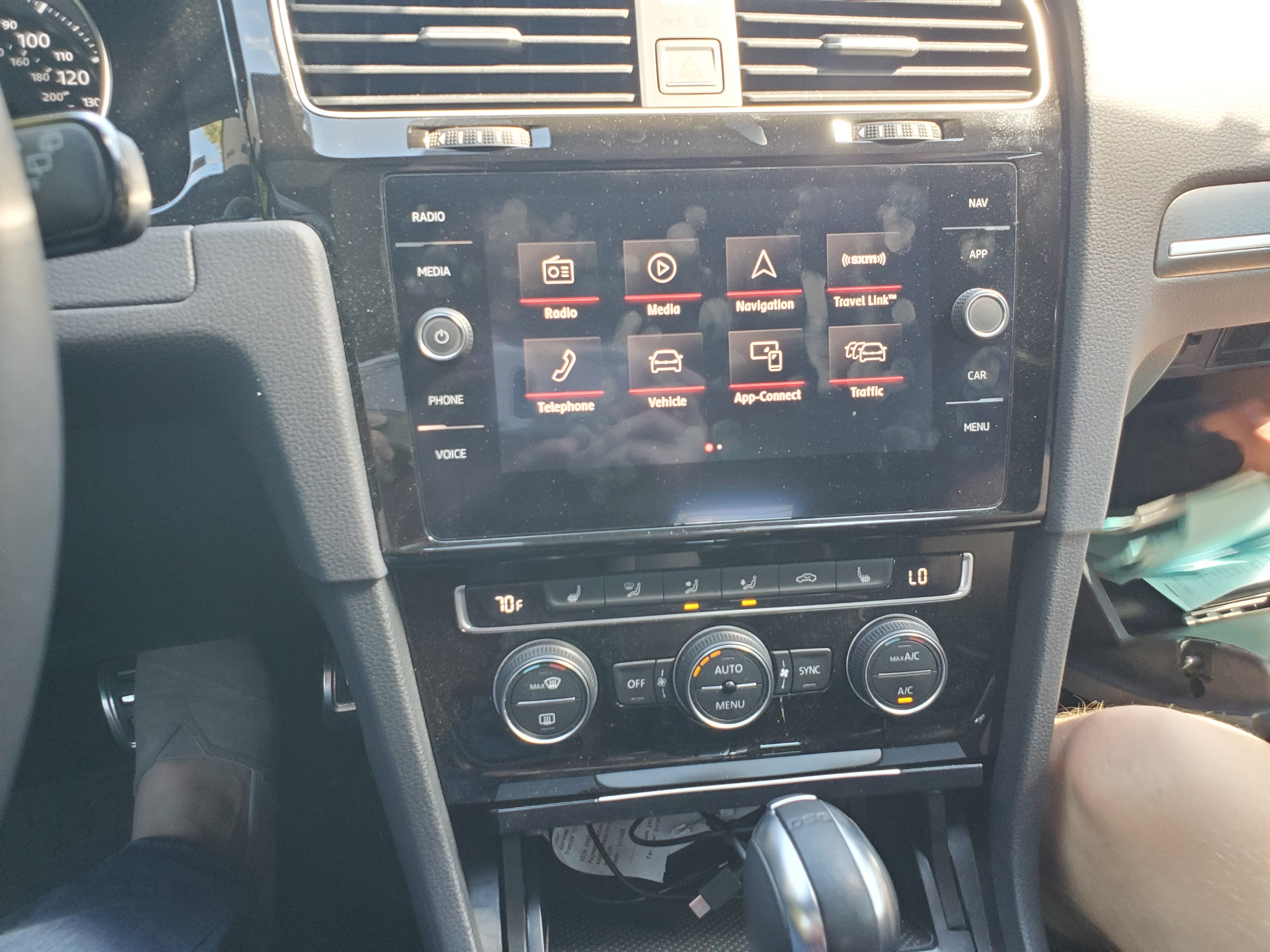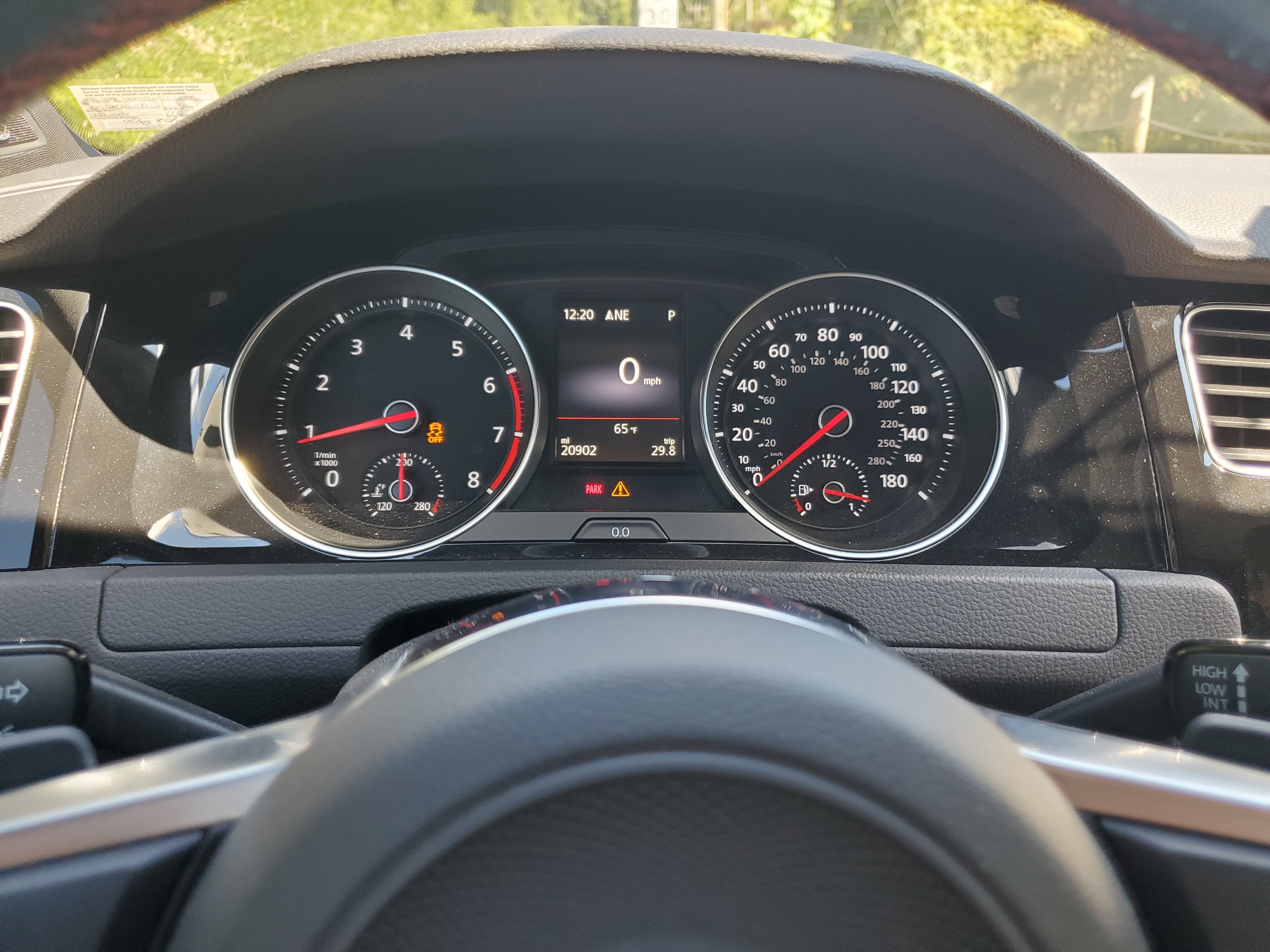
It was revealed not long ago that Volkswagen would discontinue selling their base level Golf hatchbacks in the United States, instead only selling the GTI and R performance trims. This could have happened for any number of reasons, but a few stand out. Firstly, because the GTI and R are performance cars built on a mainstream compact family car architecture, they can be sold at greater profit margins while retaining a relatively lower investment to produce. Second, it is likely enough that the Golf simply did not sell very well, again, driving VW to focus on variants of it (no, not the Variant wagon) that promise higher profit margins (again, performance trims that command a higher price while using a small car architecture. This is somewhat borne out in fact; Golf sales plunged by a factor of three between 2017 and 2020. Third, perhaps Volkswagen is simply very confident in the performance of their sporty compacts; perhaps they simply think that the GTI and R are so good that they can present a product line all their own. Are they right? Let's find out.
I noted the understated styling of the sixth generation Golf GTI, and I find that this seventh generation GTI is much the same. Though it has gained harder edges and bolder lines, the styling treatment feels restrained, especially in comparison to sport compacts like the Subaru WRX or Civic Si. The GTI lacks massive angular exhaust outlets, spoilers, or wings, and from the rear, the only features to distinguish it from its more mundane siblings are the presence of twin exhaust tips and a small diffuser (whose functionality is likely somewhat debatable.) Visually, the GTI comes alive from the front, where its massive wheels and gaping lower intake become apparent, but the star of the visual show is the bright red character line that runs across the grille and inside the light fixtures. With the refreshed Golf came Volkswagen's final commitment to a newly angular design language, discarding entirely the friendly and amiable-looking rounded light lenses and body curves that characterized their models from the 2000s and 2010s; the new Volkswagen is purposeful, precise, and undeniably European. This Golf is even clad in solemn gray and sharp, creased lines to complete the Continental look.



The interior feels perhaps less refreshed than the exterior; it retains the same low-gloss dark plastics and diffusely gleaming metallics as older Volkswagens, spots of familiarity in an aggressive newer car. The center stack is made somewhat more modern by a large, glossy, and bright infotainment display, as well as dual-zone climate control, but even the red stitching and bold "GTI" emblem on the steering wheel can't distract from the fact that this is, by and large, a particularly well-crafted economy car interior. This doesn't necessarily mean it's bad, however; materials and buttons generally feel solid, and the infotainment is a class above the usual fare for small cars. The screen is easy to read, and boasts not only the typical suite of music and navigation functionality, but also a deep set of menus for the vehicle's behavior, including a secondary gauge cluster with information like the boost pressure, oil temperature, and instantaneous acceleration. For once I lament that the screen doesn't stand proud of the dashboard, for those vehicle information pages give the driver a good reason to want to look at it while on the road. If the driver's attention drifts away for a moment, however, they might feel compelled not to worry; the Autobahn trim, which this is, comes with a variety of driver assistance features, including front and rear automatic emergency braking, blind spot warning, lane keeping assistance, and more. Typically, however, the driver focuses on a relatively typical two-dial gauge cluster with a decent multifunction display, as well as a large, easy to grip steering wheel that manages to be easy to grab without feeling quite as chunky as FCA's wheels. Perhaps somewhat grabbier are the front seats; they are comfortable, deep buckets finished in a grippy pleather, with surprisingly tight bolsters, tight enough to be almost uncomfortable for someone with wider hips. Perhaps this is Volkswagen's way of not-so-subtly intimating that they expect largely male GTI buyers. Nevertheless, the GTI's cockpit remains supportive and welcoming, and the seats perform excellently at supporting the body in hard corners.
As with many of their other models, Volkswagen placed the windshield relatively far back, a decision that makes the driver feel slightly closer to the action outside, though it cuts down on cabin space. However, moving the A pillar back allows VW to expose more of the engine compartment, while more streamlined cars like the 2006 Civic are forced to place the strut towers underneath the base of the windshield, making maintenance more difficult. Fortunately, unlike some of their sedans, VW boosted interior room by raising the roof in the rear seats, resulting in a surprisingly spacious back seat that can accommodate tall passengers comfortably without brushing the ceiling. The rear seats are also decently comfortable, thanks in part to the leatherette seat fabric, and feel like more than an afterthought, which, although seemingly unflattering, is more than can be said for many compact cars. Though the GTI badges promise rip-roaring performance, the interior is inviting, comfortable, and fairly quiet, and with the stereo and driver assistance features, one could choose much worse cars to road trip in.



But this is a Golf GTI. You're here to read about the rip-roaring performance. For background: This is a compact family car. The seventh generation Golf is also sold as a station wagon and MPV. It is only offered with three- and four-cylinder engines. It comes with a MacPherson strut front suspension and a four link "control blade" multilink rear suspension. Most Golfs sold are front wheel drive, make less than 150 horsepower, and don't have ultra-quick dual clutch gearboxes.
The Golf GTI is no longer a humble, light, pared-down hot hatch with just enough power and just enough grip. That much is apparent from the moment the car starts moving. The suspension, though fitted with variable-rate dampers, is undeniably stiff; though potholes are handled gracelessly, the ride is immensely communicative and connected. This is assisted by 18 inch wheels with thin 40% sidewall tires, resulting in a road-hugging driving experience with none of the soft isolation that many economy cars are moving towards. The steering is equally communicative, with a very fast steering rack, though Volkswagen has tried to somewhat reduce driver effort at parking speeds, a welcome touch. At speed, the car responds sharply and instantly to steering inputs, and the front end eagerly plunges into corners at the driver's command, and manages to hang on tenaciously even late in the corner as the driver begins to accelerate again, refuting entirely the notion that rear wheel drive is the be all, end all of cornering performance. This is aided by a sophisticated vehicle stability and dynamics augmentation system that controls the wheel brakes, steering rack, and differential to shunt the car around bends faster and more stably with less wheel slip. While the Golf GTI has the same sharp, direct performance that rewards careful, precise inputs from the driver as the BMW 3 Series, the GTI differs in that Volkswagen designed some measure of forgiveness into its dynamics. This sounds like a backhanded insult, but it results from the significant role that electronics seem to play in the GTI's driver experience. This is not a car that punishes mistakes, that will snap oversteer if the driver takes a corner too fast, that skips across bumpy corners, threatening to pitch them into the opposing lane, that jerks and twitches if the driver is too clumsy; Volkswagen seems to have found a way to tease out the driver's intentions from their necessarily imperfect inputs. In short, the Golf GTI handles obediently, confidently, and very consistently; it hugs the road in all scenarios, and cleverly masks or avoids those where it cannot, resulting in a remarkably polished yet enjoyable feel. And we haven't even talked about the engine yet.


Said engine is a 2.0L turbocharged four cylinder that pumps out a healthy 230 horsepower, as well as somewhat shocking torque, on the order of 258 pound-feet, which comes on low in the rev range, making power delivery feel quite like that of a naturally aspirated motor, something VW's turbo fours are quite good at. Unlike the Volkswagen CC, which uses a somewhat older 2.0 TSI plant, the GTI comes replete with substantial turbo noise at high load states, as well as a muscular, if understated, engine note. Throttle response is snappy and responsive, and ample power is available through much of the rev range, meaning that the driver doesn't need to constantly optimize their gear selections to get the performance they want. However, Volkswagen mellowed out the throttle gain at low speed when setting off, making the dual clutch gearbox much more docile at very low speeds, a sticking point in older DCT-equipped VWs. On that note, the dual clutch performs admirably. Where the CC's DCT fumbled shifts and launches trying to be both sports and comfortable, resulting in an experience that may as well have used a conventional automatic, the GTI's gearbox sets off smoothly and confidently and manages to shift both alarmingly fast and remarkably smoothly. With the car set to be as aggressive as possible, shift times become so fast as to be nearly imperceptible, with the engine's speed seeming to simply jump from one rate to another with no discontinuity, and manually commanded shifts come fast and predictably, even when double downshifting to do something impromptu and professionally inadvisable. A number of different drive modes are available, altering suspension, chassis control, transmission, and engine policies, and while none of them achieve true luxury, they run a reasonably wide gamut from daily-able commuter-friendly to outright aggressive, and subtle tuning of the throttle gain, transmission shift policy, and shift points accentuates these changes. Fortunately, throttle and shift policy settings persist when in manual mode, a step up from somewhat older VWs that require one to either choose sport mode or manual mode. Ultimately, the powertrain is entirely befitting of a compact performance car; the quick gear changes and responsible throttle make the most of the engine's power, conferring impressive acceleration and outright speed, and with the Golf's sophisticated traction control system, including an electronically controlled limited slip differential, wheel spin is only really achievable in hard acceleration in first gear, an effectively guaranteed outcome for nearly any front wheel drive performance car.
So the Golf GTI is reasonably efficient, not very expensive (all things considered, though it's not cheap by sport compact standards), remarkably fast and nimble, and comes with a wide variety of standard features. Are there any drawbacks to be found? One might be hard pressed to identify any, but we should keep in mind, again, that this car, fundamentally, is a compact family car. On hard braking (and with sizeable, powerful brakes, hard braking is quite possible), a certain tightness appears in the steering, an unavoidable consequence of single-arm MacPherson strut front suspensions, and there is necessarily a potentially undesirable coupling between static/dynamic wheel loading and steering feel and effort as a result, a problem that higher-end cars like the BMW 3 Series circumvent by using a pair of lower control arms, which allows them to adjust the wheel pivot point further than a single-arm system can. One might well ask why such a performance car as the Golf GTI, not to mention its seemingly endless stablemates (GTD, GTE, R, Clubsport, Clubsport S, and presumably more) avoid such a system, but ultimately...it's not worth it. Such a change is an incremental improvement at best, and most of the deficiencies can be either eliminated or hidden through the aforementioned sophisticated vehicle stability and dynamics control system. I thought that the 2013 Volkswagen Jetta was an exercise in design reduction, an exploration of what can be removed from a 'sports sedan' before it ceases to be identifiable as such, the Golf GTI might be the very opposite. With its aspirational, yet fundamentally simple interior, its economy car chassis design, its efficient engine, this might be the antithesis: "How much can a small family car be augmented until it ceases to be identifiable as such?" The Golf GTI tries so hard, with a lightning-quick gearbox, muscular motor and brakes, and deeply intelligent computerized chassis dynamics, yet it cannot escape its nature; it remains sensible, small, efficient, and recognizably a Golf. This begs a harder question: If a car is so characterized by aspiration, what comes across more strongly, what it aspires to, or the fact that it aspires at all?
Some car enthusiasts lament the increasing computerization of modern cars, wishing for the older generation of simpler designs without driver assistance systems or traction control, and the Golf GTI simultaneously supports and refutes this viewpoint. Simply put, this car is a riot to drive; it's fast, responsive, and capable, yet approachable and safe, and much of that is due to the electronic controls built into the car's powertrain, steering, and chassis control. But on the other hand, there is certainly truth to the conventional wisdom that the best sports car is the fully mechanical one, without so-called "bells and whistles" or "nanny mode." One wonders whether the Golf GTI would be a truer sports car if it lacked its electronics, but I daresay that it wouldn't, not really, for the electronics do much the same job as stability control systems do in modern jet fighters. Such aircraft are weakly stable, if at all, and require constant computer intervention, lest they lose control entirely: Their computers make them what they are, and I believe much the same to be true here. Without them, the steering would be heavier and duller, the cornering performance looser and more difficult to manage, the transmission slower, the engine less potent in every measure. There is a romantic conception of the car as a thing that celebrates the act of driving, something that seems to mediate or convey a joy inherent to the dialogue between driver and road, a lens through which the driver interacts with the world. The Golf GTI is not that. The Golf GTI is a machine that translates human thought into motion. It is not some quirky, flawed yet beautiful piece of classic engineering, something that one must learn to drive the right way. It is a solemn, joyless, and blisteringly capable machine, and it is all the better for it.


European cars have a reputation for precision engineering and design here in the United States, a reputation for value, capability, comfort, and sheer engineering prowess, and if that's true, then the Golf GTI is the zenith of that. VW has transformed a family car into something that asymptotically approaches a dedicated performance vehicle; how could they have done so without sufficient mastery of the things that make up that reputation? They have expertly crafted this machine, and it is a machine seemingly devoid of emotion. Yet that solemnity masks an inherent ambition, for the Golf GTI refuses on a basic level to be regarded as merely a Golf. It is a car that demands, on a technical level, to be acknowledged as something more. Perhaps that is the root of these cars' popularity: They don't sell a unique style, or unbeatable performance, or value for the money; they sell the practice of ambition, the very concept of upwards mobility. There is no room for humility here, because the GTI is saddled with the greatest burden any car can bear: A nameplate legacy. It will always be compared to older GTIs, older performance VWs, and it is forced to become a tautological thing; it must be capable because it is a GTI, because GTIs are capable. This is the calculus that results in such a car. That is the logic that makes such a vehicle possible, such a direct bridge between human intention and mechanical motion. Is that possible without electronics? I think not.